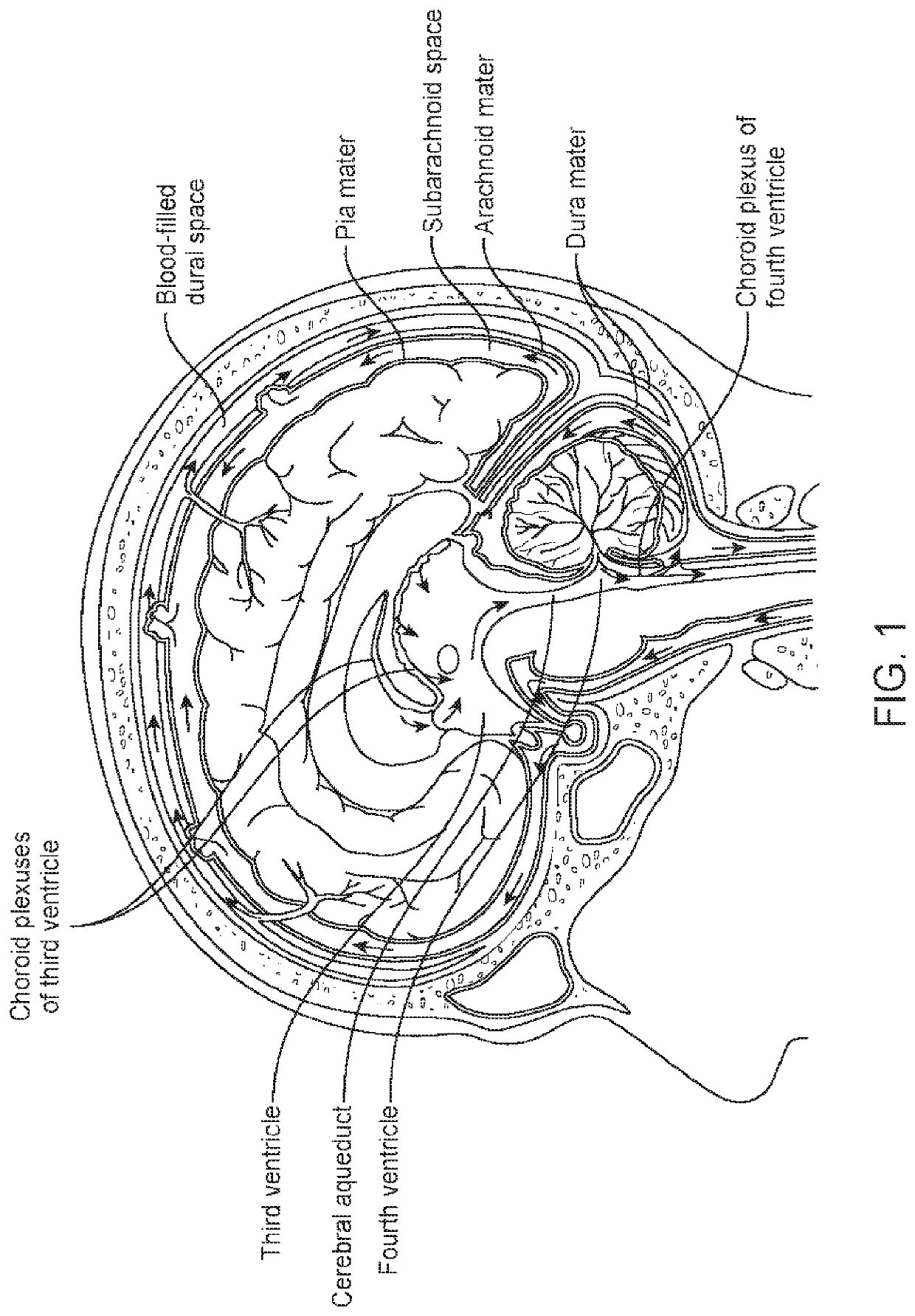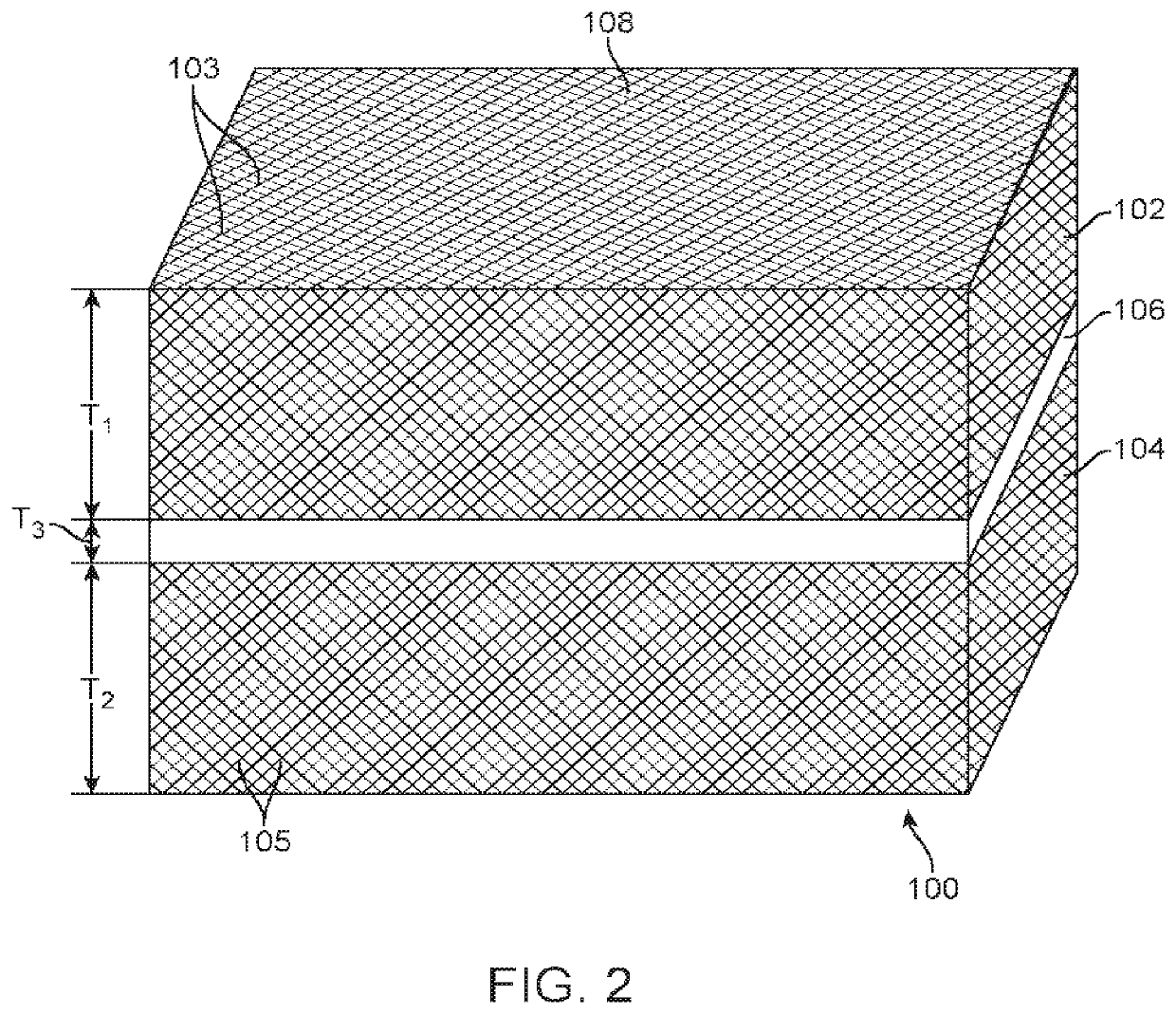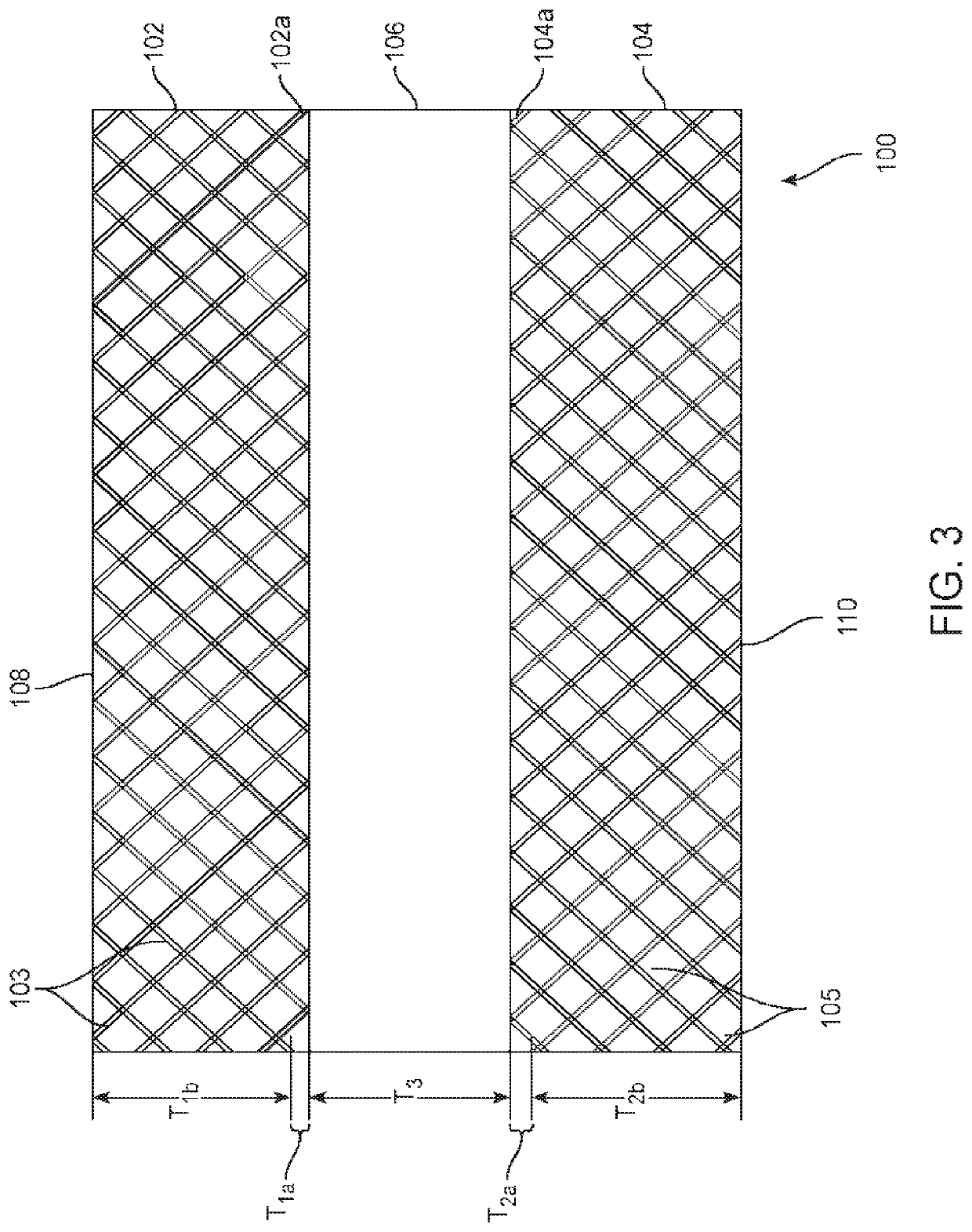Composite dura substitute implant
a technology of composite dura and implant, which is applied in the field of composite dura substitute implants, can solve the problems of affecting the growth of bone, affecting the function of the implant, and causing severe consequences, and achieves the effect of facilitating the growth of bone and facilitating the formation of dura
- Summary
- Abstract
- Description
- Claims
- Application Information
AI Technical Summary
Benefits of technology
Problems solved by technology
Method used
Image
Examples
example 1
[0070]An example of a composite dura substitute implant is composed of three layers of PEKK material:[0071]The top layer is PEKK fabric is coated with bone-like apatite, has a porosity of 50%, and thickness of 2 mm.[0072]The middle layer of PEKK fabric has a porosity less than 0.1% and thickness of 0.5 mm.[0073]The bottom layer is PEKK fabric is coated with type I collagen, has a porosity of 50%, and thickness of 1 mm.
example 2
[0074]An example of a composite dura substitute implant is composed of three layers of UHMWPE material:[0075]The top layer is Dyneema® fabric offered by DSM company, is coated with bone-like apatite, has a porosity of 60%, and thickness of 2 mm.[0076]The middle layer is a UHMWPE sheet with a porosity less than 0.1% and thickness of 0.5 mm.[0077]The bottom layer is Dyneema® fabric coated with type I collagen, has a porosity of 60%, and thickness of 1.5 mm.
example 3
[0078]An example of a composite dura substitute implant is composed of three layers of PEEK material:[0079]The top layer is PEEK fabric coated with bone-like apatite, has a porosity of 50% and thickness of 1.5 mm.[0080]The middle layer is a PEEK sheet with a porosity less than 0.1% and thickness of 0.5 mm.[0081]The bottom layer is PEEK fabric coated with type I collagen, has a porosity of 50%, and thickness of 1 mm.
PUM
| Property | Measurement | Unit |
|---|---|---|
| porosity | aaaaa | aaaaa |
| porosity | aaaaa | aaaaa |
| porosity | aaaaa | aaaaa |
Abstract
Description
Claims
Application Information
 Login to View More
Login to View More - R&D
- Intellectual Property
- Life Sciences
- Materials
- Tech Scout
- Unparalleled Data Quality
- Higher Quality Content
- 60% Fewer Hallucinations
Browse by: Latest US Patents, China's latest patents, Technical Efficacy Thesaurus, Application Domain, Technology Topic, Popular Technical Reports.
© 2025 PatSnap. All rights reserved.Legal|Privacy policy|Modern Slavery Act Transparency Statement|Sitemap|About US| Contact US: help@patsnap.com



